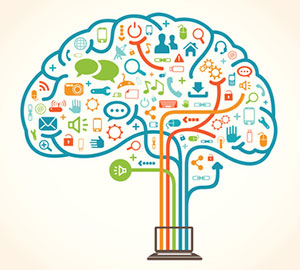
What Does STEAM Stand For in Education?
What does STEAM stand for in education? Listed below are some things to know about STEM (Science, Technology, Engineering, Mathematics) and the humanities. These subjects are essential for a well-rounded education, but many parents and teachers are confused about what they mean. This article will explain the difference between STEAM and STEM, as well as explain career opportunities that stem from these subjects. In addition, you’ll learn how STEM can be integrated with the humanities to benefit the entire educational process.
Science, Technology, Engineering, and Mathematics
Science, Technology, Engineering, and Mathematics (STEM) are broad terms that refer to a set of academic disciplines. They are commonly used to discuss issues in education policy, curriculum choices in schools, and national security concerns. In addition, STEM has implications for immigration policy and workforce development. Let’s look at the key factors that affect STEM education. Why is STEM education important? What are the implications of an education policy that does not include STEM subjects?
STEM is not just a specialized field but a broad category of academic disciplines that is applied to education and the workforce. STEM education emphasizes problem-solving skills, exploration, and technology. Students are encouraged to apply their skills in a wide range of contexts, including through independent research projects, creative approaches, and critical thinking. STEM also prepares students for successful careers in the fields of medicine, engineering, and business.
STEAM
What does STEAM stands for in education? STEAM stands for science, technology, engineering, arts, and math. STEM is a popular acronym for subjects in the science and engineering fields, and many of today’s jobs require a mix of analytical and creative skills. These skills are increasingly in demand in modern job markets, with STEAM industries growing twice as fast as non-STEAM industries. Today’s employers want candidates with a variety of skills, and graphic designer roles may require coding and development. STEAM education helps increase diversity and quality in the workforce by integrating multiple disciplines into the learning process.
Whether you plan to start a STEM school or simply implement a STEAM curriculum in your current classroom, it’s important to find a supportive community to help you get started. There is no one-size-fits-all approach to implementing STEAM, and no one person can implement it fully. Instead, seek the support of colleagues who have already implemented a STEAM-focused curriculum in their classrooms.
Integration of humanities
Integrating the humanities and STEMM disciplines in education is not an entirely new idea. Studies have shown that arts and humanities have the power to facilitate the acquisition of complex knowledge in STEM fields. Students who produced 3 to 5-min films on a neuroscience concept performed better than those who learned the concept conventionally. This finding has wide-ranging implications for teaching and learning across disciplines. But what are the benefits of integration? Read on to find out.
One way to integrate the humanities and science is through teaching music in the classroom. Students can take a Making Music with Musical Robots class at Worcester Polytechnic Institute to learn about technology design for musical instruments. Similarly, the MIT Media Lab is involved in research related to virtual reality, which can facilitate storytelling, empathy, and engagement. According to a National Academies study, the integration of humanities and science can improve students’ job prospects by contributing to their creative problem-solving, collaboration, and communication skills.
Career opportunities
While there are a number of factors that influence the choice of career, a major focus area is advancing science, technology, engineering, and mathematics (STEM) education. A strong focus on these subjects can promote student interest in STEM careers and develop their creativity and problem-solving skills. However, this research also found that STEM education programs can have an impact on students’ attitudes toward STEM. In particular, STEM education programs should be designed to help students discover and consider all possible career paths.
The study of STEM career interests and knowledge is based on the results of a study involving 1448 public school students. The study revealed that self-efficacy, interest, and outcome expectations all influence STEM interest. The study also found that interests partially mediate the relation between self-efficacy and interest across Holland’s broad occupational themes. This research suggests that STEM education programs should be designed to enhance students’ interests and self-efficacy, as these factors are strongly related to outcomes and satisfaction.
What does STEAM stand for in education? Listed below are some things to know about STEM (Science, Technology, Engineering, Mathematics) and the humanities. These subjects are essential for a well-rounded education, but many parents and teachers are confused about what they mean. This article will explain the difference between STEAM and STEM, as well as…
